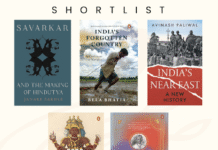
It is easy to despair and easy to criticize the Indian news media. Easy to generalize and call it godimedia or sold out, or fake news. And easy to enough to make fun of farm-housed editors and the fawning foibles of TV anchors and third-generation barons alike. It is true that while many of the media barons are politician investors, others who are inheritors have become industrialists. Many of them enviously expect the same kind of returns from the media industry as their business school cohorts get from real estate, auto components, or software.
First of all, news media is a different kind of business. It cannot have the profitability of making soap or shampoo, and the motivation also has to be tempered with a touch of idealism or social purpose. Newspapers built communities long before social media and the internet. Now that electronic media and digital technology have displaced them, they have to see themselves as a part of the information and influence ecosystem. It is naïve to talk about neutral or balanced news, and here-in lies the rub – purpose, and ethics are required. Candidates who respect knowledge, science, and rationality will be given preference.
“We don’t need no mainstream”
What many observers are missing is that it is pointless in criticizing the so-called mainstream media in India. It is an amalgam in search of itself.
The new media is digital-first and digital-only. Its mixture of text, visuals, voice, and video are aimed at smartphones. It has given rise to a new generation of entrepreneurs who are mostly refugees from the old media who have found sponsors, donors, subscribers, and above all, readers. Technology has given them the same power and voice as the owners of printing presses and fewer costs. And interestingly, in our environment, they are not at odds with the old newspapers and television channels – they often work in an ecosystem with them.
They now have their annual conference, The Media Rumble https://www.themediarumble.com/, of which the significant sponsors are generally Google and Facebook when it is a face to face event at the Habitat Centre in Delhi. In 2020, it is an on-going virtual event taking place fortnightly on Fridays to culminate in an online event in September.
The new media ecosystem
The leading entrepreneur-editors of the Indian digital media websites recognize the value of the old media. They are frank enough to admit that their business model is as fragile as the old media, which has seen its revenues eroded by Google and Facebook and finally submerged by the Covid-19 tsunami. It has to be accepted that all the channels, fragile as they are, can work in combination in getting the story out – that together they stand for balance and development.
The plural and mutual work is not a planned effort but a fragmented one. The glue comes from the motivation and activity of the journalists, photographers, videographers, editors, and anchors. In some cases, print media owners also play a decisive role, and in others, they are compelled to act when the tide of information overwhelms their fence-sitting.
Five incidents in the time of Covid
Five recent incidents illustrate the power of the Indian news media. The first was the violent confrontation at the China-India border. The electronic, print, digital, and social media took on the government’s obfuscations as to what happened and where the incidents took place. There was no shortage of former military personnel and experts – who talk and wrote sense – balanced by several regular panelists and nationalist saviors.
The second incident was the coercive letter of the ICMR to various medical research entities entreating them to fast track the Covaxin drug trials for release by 15 August 2020! The print and digital media spoke out in unison. Social media played a decisive role in questioning this type of nationalist quackery and positing the role of science and research protocols for human trials.
The ICMR was compelled to clarify – which in India means backtrack. It turns out that there is no dearth of medical scientists and experts who are articulate and brilliant science journalists, some of whom are well employed by our best traditional media.
The third incident showing the influence of the news media is about a photograph published in The Indian Express. In a column in the same paper, on the morning of 11 July, Krishna Kumar writes, “No single description or picture can capture the impact the coronavirus pandemic has made on children’s lives. Faces of 15 children who live in a village in Bihar stare at you from a photograph taken by Dipankar Ghose, which appeared in this newspaper on July 7.”
Kumar goes on to decipher the printed photograph. “Two of the 15 children have hair that an older person has tried to sort out. The hair of all the others is dry, sparse and has that shade of light brown we recognize as a sign of serious nutritional deficiency. At least six children in the photograph have the stare that speaks of hunger. I don’t mean the gaze of a hungry child desperate to be served a delayed meal. No, it is the stare that children acquire when they stop waiting for a meal. These are children in whose life eating is no longer a daily activity. They go hungry so often that they don’t expect to be fed anytime soon. Their expression reveals that. Their large eyes are without expectation.”
Krishna also says about the quick response of the Bihar government, “The Indian Express story and visual pushed them into taking such an action. It is hard to say what made them do so, the story, or the visual — perhaps both. It is quite amazing that a newspaper’s effort to foreground the plight of rural children matters so much.” He goes on to decry what results the action may eventually yield and also reflects (as a former head of the NCERT) on the recent move of the government in slashing 30% of the online school curriculum.
Murder in the time of Covid
The fourth incident was that of a father and son being tortured and murdered in police custody in Tamil Nadu for keeping their shop open for a little while past curfew. The news media and social media spoke up in unison, and the policemen for whom these are normal acts performed with impunity, have been arrested.
The fifth incident is the police raid on gangster-politician Vikas Dubey, which led to the slaughter of the police raiders since two of their colleagues had informed the gangster who set a trap. Dubey escaped, and this led to a series of encounter killings of the gangster’s accomplices. Eventually, a week later, Dubey was caught at a temple in Ujjain by the Madhya Pradesh police and handed over to the Uttar Pradesh police, which had flown to pick him up. On the way back by road, the UP special task force killed Dubey as he managed to escape. Another encounter killing.
The electronic, print, digital, and social media discredited the government and its agency ANI right from jump street. Complicity and impunity in encounter killings are the watchwords and something that investigative journalists in Uttar Pradesh and the country have been writing about for years.
From the initial incident itself of 8 police ambushed and killed in the raid on Dubey’s rural home and the subsequent forest escape and killing of the gangster’s accomplices as they fled, the media identified the seeming inability of the Indian police forces to bring back criminals alive. They openly predicted the encounter death of Vivek Dubey since he was seen as a danger to many vested interests.
A caravan of journalists followed the convoy returning Dubey to Kanpur and were stopped a few kilometers before the alleged escape and killing. They have continued to expose the scandalous crudity of the entire operation on all channels, while the government only has its pet agency ANI to defend itself.
In a similar vein, the media at considerable risk extensively covered the Delhi riots or genocide in the last week of February. Journalists have been on the front lines of the Covid-19 epidemic, too, putting themselves at high risk. The news media ecosystem is too diverse and too driven by our democratic constitution. As a business, it’s worth maybe questionable for some, but as a profession, it is pandemic.


















Sudeep Bhattacharjee comments, “Well written and hard-hitting. If I may add a couple of points to this, they would be –
1. Yes, the media is still powerful and commands a huge number of eyeballs (be it print or electronic), but somewhere down the line, it has lost the credibility it once had. The likes of the hard-hitting editorials in The Statesman for example. Every profession has a few bad apples you might argue. But do we really have respect for the media as much as it was maybe during our childhood?
2. I also think we must factor in the amount of fake news being circulated especially on the social media platform. With elections just round the corner. What I hear/see is a huge amount of fake news being circulated.